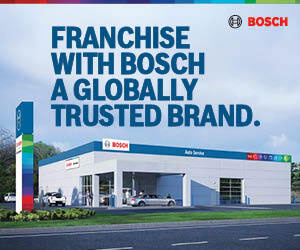Master Class 2: Priceless lessons from your peers

Summer officially arrived this weekend, anticipating the arrival of the year’s halfway point, a perfect time to reflect, analyze, and assess your organization’s first-half performance—and tweak and adjust whatever needs fixing or improvement.
To aid in that process, we’ve compiled a second Master Class, a “greatest hits” collection from the first 18 months of this newsletter, featuring topics critical to the success of multi-unit restaurant franchisees:
- The journey of growing from one unit to many
- Overcoming the challenges of operating multiple units
- Consistency in employee training, culture, and service quality across different locations
- Customer retention strategies that have proven effective
- A decision you regret—and what it taught you about running multiple franchise locations
- Advice for someone considering buying their first franchise
- Franchising trends and predictions for 2025 from the MUFC Advisory Board
Want more answers? If any of these topics is keeping you up at night, click the link back to the newsletters where they first appeared. (Brands, unit counts, titles, etc. may have changed since initial publication.)
Have more questions? If you have a topic you’d like to see in a future issue, send us an email.
Like what you see here? Tell us! Already subscribed? Tell your friends!
Franchisee Bytes: Do you have brands in different segments? Why/why not?
Can you walk us through your journey from owning your first franchise to now managing multiple units? (Issue #1, Jan. 8, 2024)
ERIC HEFNER
Company: Zaxby’s of Middle Georgia
Brands: 24 Zaxby’s
Years in franchising: 28
Opening my first store was an eye-opener! I had no previous restaurant ownership experience, but had a burning desire to succeed. I did a lot of research before choosing Zaxby’s in 1996. Within a year of opening my first store, we were already working on #2 and further expansion plans. I tried to create an infrastructure of like-minded people, who would advance the brand. Within 3 years, we had opened 5 stores. From there we continued to reinvest and expand our territory. Today we have two dozen stores between two states, Georgia and Alabama.
Along the way, I brought in trusted relatives and friends who wanted not only to invest, but to partner with me, taking ownership in the stores and running them as well. This has been key to our growth. We jumped out to 20 stores in short order, trying to grow at a quick, but measured, pace. Our business is not for the faint of heart. You have to be ready to roll your sleeves up, all the while trying to balance your personal life. I have been blessed with a wife of 30 years and 4 children who have defined my life, more so than my work.
The restaurant business can be a grind, but it epitomizes the American Dream to me. Work hard, take nothing for granted, and you can be rewarded, especially with a great opportunity like Zaxby’s.
What specific challenges arise when transitioning from a single-unit to multi-unit franchisee, and how did you overcome them? (Issue #2, Jan. 22, 2024)
VIOLET GINTSIS
Brands: 5 Beyond Juicery + Eatery
Years in franchising: 4
Transitioning to a multi-unit franchisee has been an exciting journey with several growth opportunities. A significant challenge we’ve navigated is in staffing, particularly finding the right people and managing turnover. We’ve transformed this challenge into an opportunity by prioritizing recruitment, constantly reviewing needs, and proactively hiring, striking a balance between thorough training and efficient labor management. Partnering with organizations serving underserved communities has not only broadened our candidate pool, it also has made a positive impact in the communities we operate in.
Although a challenge, we’ve thrived in maintaining brand quality across multiple stores. Implementing a regional manager system provides operational oversight and training, fostering teamwork and shared successes. Daily check-ins and regular meetings facilitate open communication, ensuring that our teams are able to quickly resolve challenges. We reinforce our commitment to exceptional service by consistently responding to customer feedback. Viewing challenges as opportunities for improvement, our dedication to training, clear communication, and high expectations create a positive work environment. Overall, the journey to become a multi-unit franchisee has been worthwhile, marked by positive growth, collaboration, and resilience. We’re eager to keep the momentum going into the years ahead.
How do you maintain consistency in employee training, culture, and service quality across different locations? (Issue #8, April 22, 2024)
DAVID BLACKBURN
Company: CEO, Southern Rock Restaurants
Brands: McAlister’s Deli, 155 in 13 states
Years in franchising: 12
David Blackburn was named the 2022 Single-Brand Leadership MVP (Most Valuable Performer) for achieving brand leadership with one brand. He is McAlister’s largest franchisee, was GoTo’s (formerly Focus Brands) 2023 Developer of the Year, and has signed development deals for 69 more McAlister’s.
We have a very dynamic training program with assets and resources on a shared hub at GoTo Foods (formerly Focus Brands). We also can assign our own training modules for new employee orientation and training for our team to engage electronically.
We have a disciplined approach to onboarding. To ensure we are prepared for someone to start, we make sure a Certified Trainer is assigned and that we have enough supplies and uniforms. It’s great to get off on the right foot.
In a general sense, we try to identify, hire, and retain folks with a friendly personality who are engaging and work well on a team. You can’t get everything you need from a training program, so having team leaders and managers who enjoy teaching and working with others is important.
I think culture starts with having an inclusive environment that’s fun to work in, where people look forward to going to work. Just two days ago, someone told me they look forward to coming to work as much as they look forward to leaving work to go home to their family.
Being fully staffed is a big part of culture. You must have enough people to execute well, not only for our guests, but also so our staff doesn’t get burned out. Service quality is all about having enough. Someone told me a long time ago there are only two ways to mess up a restaurant: not enough people and not enough product to meet peak demand. And now, 45 years later it has never been more true.
Can you share some customer retention strategies that have proven effective across your locations? (#12, June 24, 2024)
SAM ASKAR
Company: COO, Askar Brands
Brands: 75 Dunkin’, 42 Church’s Chicken, 1 Papa Romano’s, 1 Blackjack Pizza. Askar Brands is also the franchisor of Papa Romano’s, Blackjack Pizza, Papa’s Pizza To Go, and Breadeaux Pizza
Years in franchising: 18
1. Technology Integration: Online ordering, text and AI ordering
Providing a seamless online ordering experience is crucial in today’s digital age. This includes a website that is easy to navigate, mobile-friendly, and offers clear menus and ordering options. Implementing text and AI (chatbot) ordering options can significantly enhance customer convenience.
2. Repeat Business Incentives: Rewards and loyalty programs
Offering incentives for repeat business through rewards and loyalty programs encourages customers to return. These programs can include points accumulation for discounts, special offers on birthdays or anniversaries, and exclusive promotions.
3. Food Consistency and Accuracy: Quality assurance
Ensuring consistent food quality and accurate order fulfillment is paramount. Customers expect their orders to be prepared correctly and delivered promptly. Implementing quality control measures and training staff to maintain high standards will build trust and satisfaction among customers.
4. Personalized Customer Service: Building relationships
Going beyond transactional interactions to create personal connections with customers is crucial. This can involve remembering regular customers’ names, preferences, and engaging in friendly conversations. Eye contact and attentive listening demonstrate genuine care and enhance the overall dining experience.
By focusing on these customer retention strategies, businesses can foster loyalty, satisfaction, and repeat business, ultimately contributing to long-term success and growth. Each strategy contributes uniquely to enhancing the customer experience and strengthening the relationship between the business and its clientele.
Looking back, what’s one decision you regret, and what did it teach you about running multiple franchise locations? (#9, May 13, 2024)
DENISE DOWNING
Company: PJD Investments
Brand: Toppers Pizza (La Crosse and Onalaska WI, & Winona, MN)
Years in franchising: 22
Learning to delegate effectively is a crucial lesson in being an owner. Letting go can be hard, but if you don’t it can lead to burnout and can also hinder the growth of your business and your team. By empowering your managers and trusting them to make decisions, you give them room to grow, but also free up your own time to focus on other important aspects of your business. Allowing them to fail sometimes is part of the learning process, but it’s also an opportunity for growth and improvement. Trusting in your team’s abilities and giving them the ability to take ownership can lead to a more resilient and successful business in the long run.
Looking back, we wish we would have stepped back sooner and let managers run things more. Today we are in a place where we cannot imagine stepping back into the stores. Our management team prides itself on problem-solving on its own. We still guide them and provide feedback regularly and are still very much a part of daily operations, but by letting go we allow them to feel ownership in the business.
Advice for someone considering buying their first franchise (#13, July 8, 2024)
KEITH R. MILLER
Company: Principal, Franchisee Advocacy Consulting
Brands: 3 Subways
Years in franchising: 36
Keith Miller, a Subway franchisee in Northern California, is a longtime advocate for franchisee rights. He currently serves as Special Advisor to the Asian American Hotel Owners Association (AAHOA), Director of Public Affairs and Engagement for the American Association of Franchisees and Dealers (AAFD), and Director of Legislative Affairs for the Fair Franchising Initiative.
- First, understand that maybe 50% of franchises being sold are not proven business models and have high failure rates. Don’t let your excitement get in the way of understanding that it may fail; you need to approach this as if it may happen.
- Understand that with personal guarantees, you are likely putting all your assets at risk. If you are older, I’d be very careful with using retirement funds to buy a franchise. If you fail, you have no time to recover.
- Hire a good franchise attorney to review the FDD and Franchise Agreement. Do not use your local attorney or friend.
- Don’t purchase a franchise because you like the current CEO of the franchise. You have to understand that the CEO is not likely to last through your franchise term. You also have to understand that your franchise is likely to be sold during the term of your franchise agreement.
- If you decide on a brick-and-mortar franchise, look for ones where you can own the real estate. Use the cash flow of the business to buy that asset, instead of paying rent. In the end, as a wise man once told me, your wealth is in your real estate, not your franchise.
Franchising Trends and Predictions for 2025 from the MUFC Advisory Board: (Issue #26, Jan. 13, 2025)
ROB BRANCA
Rob Branca is the elected leader in the Dunkin’ Donuts Brand Advisory Council, Chair of Northeast US Region, Member of the IFA Board of Directors, Chair of Inspire Brands’ Government Affairs Committee, IFA Franchisee of the Year, and Past Chair of the Multi-Unit Franchising Conference. He and his direct family partners own and operate more than 200 Dunkin’ locations.
The bifurcated economy in the U.S. is no secret; higher-income consumers who own homes with historically low mortgage rates and any other assets have been more than fine, and are expected to continue to be so in the coming administration. Lower-income consumers have had a very different experience, and many franchisees should position themselves to capture the business of this economic cohort as they, hopefully, achieve more disposable income and economic freedom.
Franchising already supports this exact opportunity through franchise ownership itself and the upward mobility of people who work for franchise owners. So it is only natural for franchising to advocate for and foster policies that promote economic freedom and upward mobility. Importantly, it is vital that those in communities that have too rarely seen these policies benefit them share in these rewards. It is not only the long overdue right thing to do, it is an existing, largely untapped economic growth engine.
Multi-unit franchisees have always seen and pursued expansion opportunities made available by stimulus spending legislation, whether to build new units, invest in efficiency-enhancing or traffic-boosting remodels and relocations, or add new brands. I see this potentially expansionary economic period to be no different. Established brands with strong franchisee bases are best positioned to move to seize the most desirable opportunities because of their experience, established support and capital networks, extensive due diligence, and market knowledge that comes second nature to them.
FRANCHISEE BYTES
Do you have brands in different segments? Why/why not?
QSR is the common link between our current brands. We’re highly regimented with processes and operational efficiencies that make sense no matter the segment. We’re invested in several segments: chicken, tacos, sandwiches, burgers, and shakes to diversify our portfolio of restaurants and widen our customer base.
—Mike Kulp is CEO of KBP Brands, which operates 828 KFC, 119 Arby’s, 85 Sonic, and 56 Taco Bell locations. In 2016, he was Chair of the Multi-Unit Franchising Conference. He’s been in franchising for 26 years.
In addition to being a franchisee with Cousins Maine Lobster, I also operate a German Doner Kebab franchise, a European-based concept. I chose it to diversify my portfolio and tap into different market segments.
—Yunus Shahul, with his brother, Thameem, is owner of Smartfoods Group, which operates 24 Cousins Maine Lobster units and 1 German Doner Kebab. He’s been in franchising for 7 years.
Our brands are all in restaurants, because that’s what we know. Within the restaurant category, we’ve diversified across five concepts, which we believe will buoy us as we grow into the future.
—Alex Karcher is Operating Principal of JCK Restaurants, which operates 61 Carl’s Jr., 11 Jersey Mike’s, 8 The Human Bean, 8 Dave’s Hot Chicken, and 1 Hawaiian Bros. He’s been in franchising for 14 years.
Right now, all my focus is on Dave’s. The opportunity here is massive, and I want to see it through to its fullest potential.
—Lawrence Kourie is Owner-Operator of 22 Dave’s Hot Chicken restaurants. He’s been in franchising for 12 years.
Yes. Sizzling Platter is diversified with multiple food brands.
—Chad Given is Brand President of Sizzling Platter, which operates 361 Little Caesars, 107 Little Caesars Mexico, 185 Wingstop, 92 Jamba, 33 Jersey Mike’s Subs, 31 Dunkin’, 7 Sizzler, 5 Red Robin, and 1 Cinnabon. He is the 2025 Mega-Growth Leadership MVP for achieving excellence in growth and expansion. He’s been in franchising for 25 years.
No, we chose Playa Bowls specifically for our love of their acai and quality ingredients.
—Carrie and Josh Ayers are the 2025 Veteran Entrepreneurship MVPs for outstanding performance, leadership, and innovation by military veterans. They operate 6 Playa Bowls and have been in franchising for 5 years.
Yes, for diversification. We entered Hand & Stone Massage and Facial Spa and fell in love with the industry, which led us to Vio Med Spa.
—Chanel Grant is Co-Owner of Healthy Living Ventures, which operates 6 Tropical Smoothie Cafe, 3 Hand & Stone Massage and Facial Spa, and 1 Vio Med Spa locations. She is the 2025 Diversity, Equality, and Inclusion MVP for her demonstrated exceptional commitment to the promotion of diversity, equity, and inclusion in her organization. She’s been in franchising for 10 years.
We are 100% focused on our Tropical Smoothie Cafe development in the QSR space. We believe it is an incredible brand, and 2025 is the jump-off point to the best years ahead.
—Nick Crouch is Co-Winner of the 2025 Single-Brand Leadership MVP for achieving leadership with a single brand. He is Co-CEO of Dyne Hospitality Group, which operates 118 Tropical Smoothie Cafes. He’s been in franchising for 13 years.
None at the moment. However, our growth strategy is to build a diverse investment portfolio.
—Phong Huynh is the 2025 American Dream MVP for achieving remarkable success in his new country. He is Co-Owner of Fuego Investments, which operates 30 El Pollo Loco restaurants. He’s been in franchising for 15 years.
We focus on fried chicken and burgers. We prefer to stick with tier-one brands because of the advantages in marketing funds and purchasing power.
—Sam Chand is the 2025 Multi-Brand Leadership MVP for achieving brand leadership with multiple brands. He is CEO of Jasam Enterprises, which operates 35 KFC and 25 Checkers & Rally’s. He’s been in franchising for 27 years.
Share this Feature
Recommended Reading:
| ADVERTISE | SPONSORED CONTENT |
FRANCHISE TOPICS
- Multi-Unit Franchising
- Get Started in Franchising
- Franchise Growth
- Franchise Operations
- Open New Units
- Franchise Leadership
- Franchise Marketing
- Technology
- Franchise Law
- Franchise Awards
- Franchise Rankings
- Franchise Trends
- Franchise Development
- Featured Franchise Stories
| ADVERTISE | SPONSORED CONTENT |

$225,000
$150,000





 The multi-unit franchise opportunities listed above are not related to or endorsed by Multi-Unit Franchisee or Franchise Update Media Group. We are not engaged in, supporting, or endorsing any specific franchise, business opportunity, company or individual. No statement in this site is to be construed as a recommendation. We encourage prospective franchise buyers to perform extensive due diligence when considering a franchise opportunity.
The multi-unit franchise opportunities listed above are not related to or endorsed by Multi-Unit Franchisee or Franchise Update Media Group. We are not engaged in, supporting, or endorsing any specific franchise, business opportunity, company or individual. No statement in this site is to be construed as a recommendation. We encourage prospective franchise buyers to perform extensive due diligence when considering a franchise opportunity.